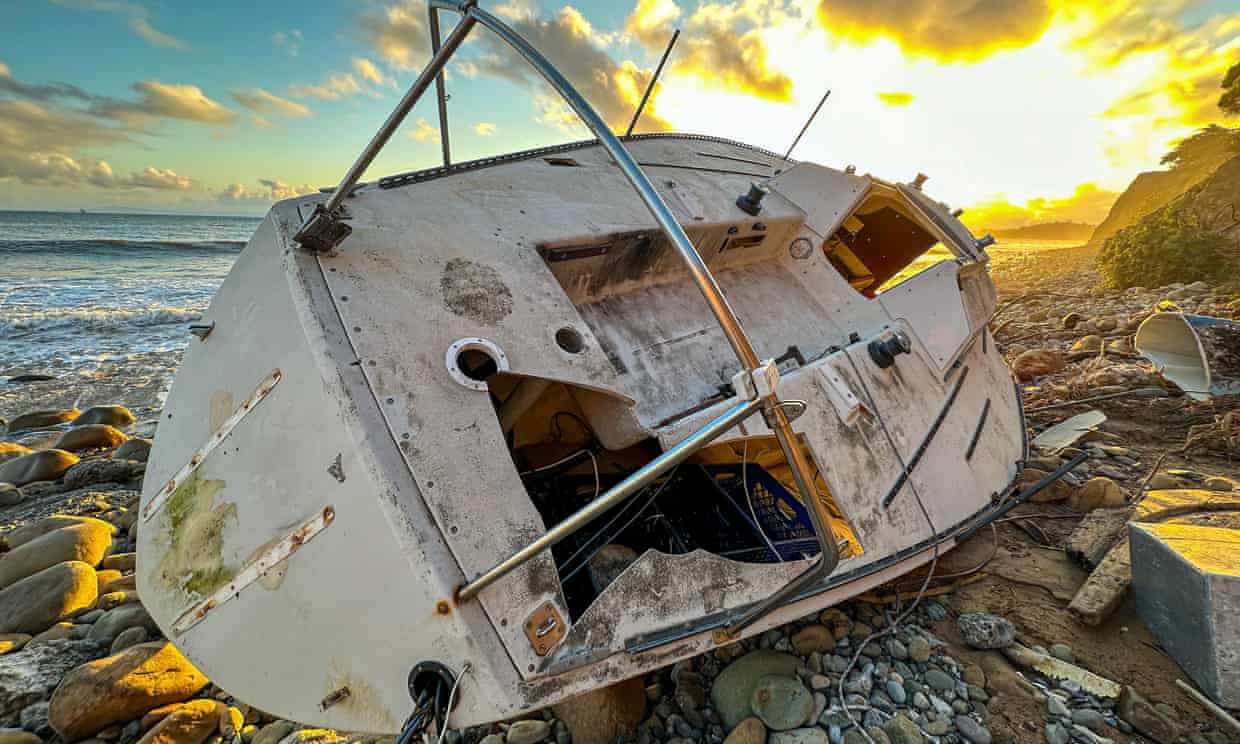Nine powerful atmospheric rivers delivered about 24.5tn gallons of water across the state, causing over $1bn dollars worth of damage
Sunshine beamed across parts of California on Tuesday, signaling a hopeful end to extreme downpours that drenched the Golden State. The nine powerful atmospheric rivers that bore down in quick succession over the last three weeks – dropping an estimated 24.5tn gallons of water across California from 26 December to 11 January – left death and disaster in their wake.
At least 20 people have been killed during the deluges, as the severe storms submerged streets, produced fast-moving flash floods and tore into inundated hillsides that sent mud sliding onto homes and highways. Along with torrents of rain, blustery winds ripped down trees and power lines, leaving hundreds of thousands without electricity during the storms.
President Joe Biden issued a major disaster declaration in three California communities hit hard by the storms, freeing important federal aid that will help with cleanup and recovery.
Biden is scheduled to visit parts of the central coast on Thursday, to tour impacted areas and meet with first responders. Along with Santa Cruz, Sacramento, and Merced counties – the three designated as major disasters – 41 of California’s 58 counties have been given federal emergency declarations, and Governor Gavin Newsom proclaimed a statewide emergency.
The cost of the catastrophe is estimated to far-exceed $1bn, making the series of storms the first billion dollar-disaster of 2023. But, even as the clouds cleared this week, there’s another storm swirling over the Pacific that could gain enough strength to become California’s tenth atmospheric river. A shot of precipitation from a quick system was also predicted for Wednesday or Thursday, the National Weather Service said.
Forecasters cautioned that although the midweek rainfall will be light, it could still cause problems across the sodden state. Overly saturated soils and systems, overwhelmed by moisture after months of dryness, will not be able to withstand more water, as tens of thousands remained under evacuation orders on Monday.
“With more difficult days ahead, it’s critical that Californians stay alert to conditions in their area and follow guidance from local emergency responders to stay safe,” Newsom said in a news release about preparation for the next round of rain.
As some communities across California brace for more, others are using the dry reprieve to begin the arduous cleanup process. The state saw more than 500 landslides since New Year’s Eve according to the California Geological Survey, and many transportation corridors remain closed or slowed due to the damage and debris.
By Monday, two northbound lanes of Interstate 5 near Castaic in northern LA county were closed indefinitely after a hillside collapsed, and in Berkeley, 10 homes were evacuated Monday when a sodden hillside collapsed, sending mud onto properties. Dozens of residents of Matilija Canyon in Ventura county, whose homes are tucked into a remote hillside in Los Padres National Forest had to be rescued by helicopter after “towering piles of rock and mud” collapsed last week, covering the single road exit out of the canyon, Ventura county sheriff’s office said.
California storm death toll climbs to 20 as deluge begins to subside




